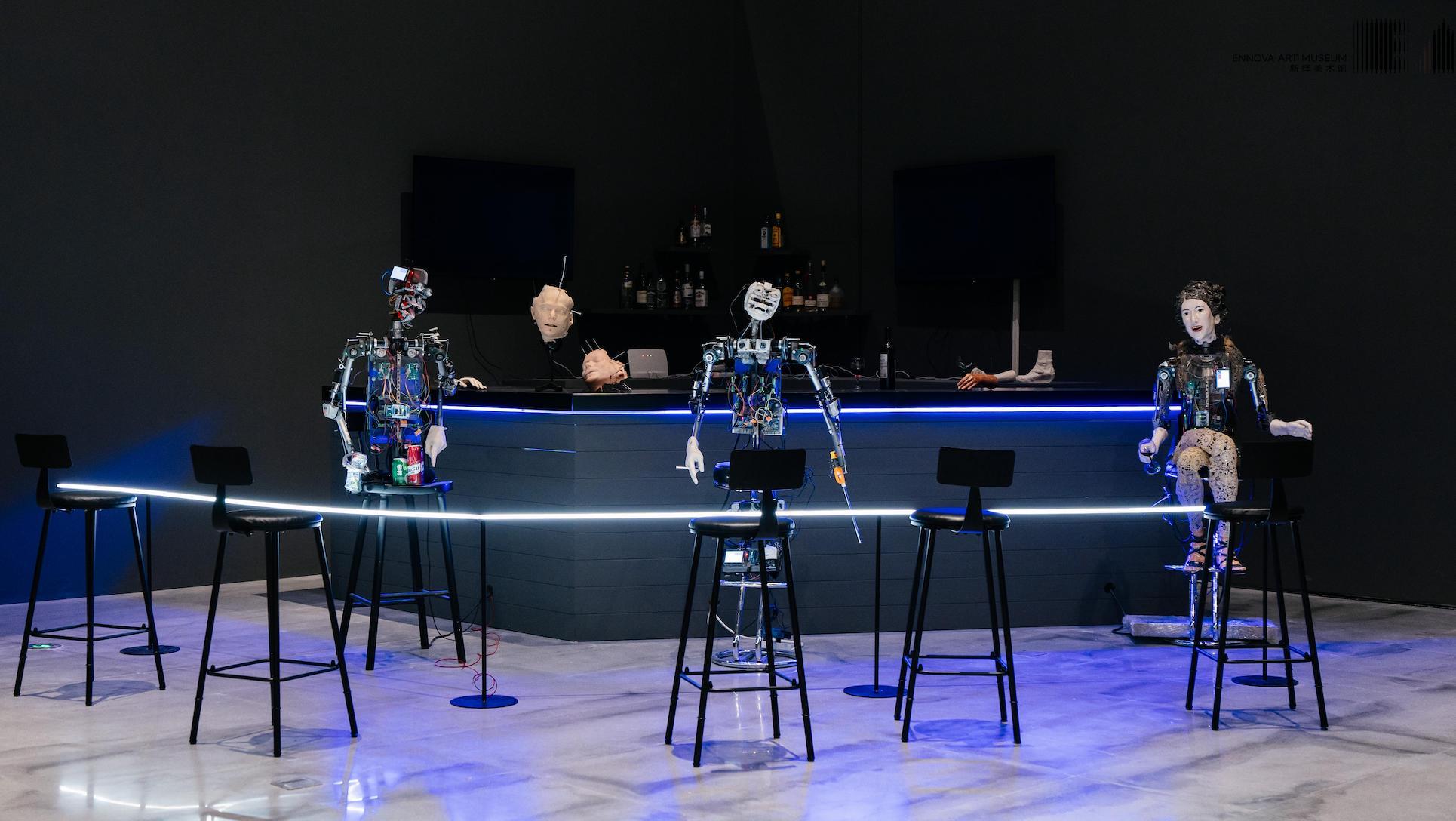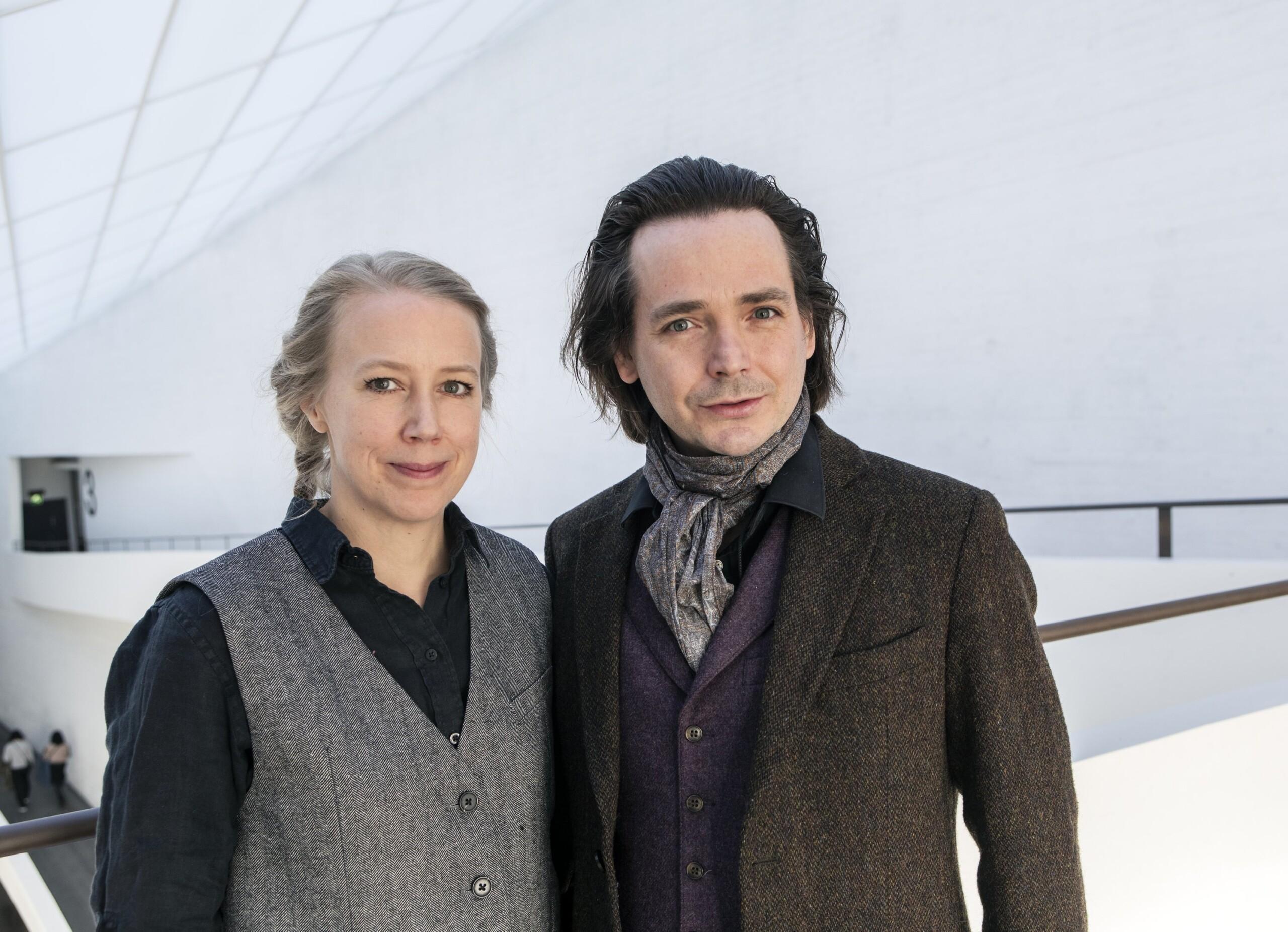
Pekka and Teija Isorättyä’s ‘Robohemians’ on view at Ennova Art Biennale in Langfang, China in 2024. Frame supported the exhibition with a grant.
In 2024, Frame’s grants enabled 147 international projects of Finnish contemporary art around the world. For our annual report, we asked grantees Pekka and Teija Isorättyä, Inari Sandell, and Toni R. Toivonen to share experiences on their international presentations. Pekka and Teija Isorättyä carried out a project for the first time in China, where they participated in Ennova Art Biennale.
Teija Isorättyä: We visited the Jean Tinguely Museum in Basel, Switzerland, with our colleague Petr Rehor to meet curators in April 2024. We received a travel grant from Frame for the trip, which significantly expanded our network in Europe. As a result, Italian curator Andrea Del Guercio invited us to participate in the Ennova Art Biennale in Langfang, China. The exhibition took place from October 2024 to April 2025, and Frame supported it with a grant.
Pekka: The Head Curator of the Ennova Art Biennale was Fumio Nanjo from Japan, and the theme was post-anthropocene. Our work Robohemians (2022), was part of a section dealing with the relationship between humans and machines. We exhibited together with artists around the world. The exhibition was quite posthuman throughout.
Teija: So the two travels were intertwined. It is important that a part of the funding for international projects comes from Finland. Frame’s funding enables a lot since our projects have high transport costs. It is especially important to get funding for transport when dealing with large-scale sculptures.
Pekka: We received our first Frame grant in 2008 for our first exhibition in Mexico City. The funding was essential for the exhibition to happen.
Teija: That’s where our whole international career started. The exhibition created new work opportunities both abroad and nationally. It was shown at the Ex-Teresa Arte Actual Museum and reached a large audience.
Pekka: It is common to get an invitation to an exhibition two years after the first contact or presentation. The reaction time is slow, and there is often a delay.
Teija: Exhibition programmes are often planned in two-year cycles.
Pekka: We would also be very interested in doing public art abroad.
Teija: Public art projects in the Nordic countries are usually excellent and well-established. The expertise is of high quality, and it would be worthwhile to strengthen its export. I see this as the strength of public art in Finland.
“Public art projects in the Nordic countries are excellent and well established.
The expertise is high quality, and it would be worthwhile to strengthen its export.”
Teija Isorättyä

Teija and Pekka Isorättyä. Photo: Petri Virtanen, The Finnish National Gallery
Pekka: Besides financial support, Frame gives artistic work a certain status. Getting support from Frame is also important in the eyes of the partners.
Teija: It has a high national and international merit.
Teija: Being present and meeting people is always the way forward. Curators can also view artists’ work online, but meeting face to face is more engaging. It’s not worth restricting artists’ mobility too much because of the environmental challenges. Art events and networks create new perspectives and new ways of thinking.
Pekka: All things should be thought through from an environmental perspective, but artists should not stop traveling. Artists discuss and exchange ideas around the world, and these encounters contribute to the global dialogue.
Teija: From China, we’re heading next to Naples, Italy. These contacts were created through the Ennova Art Biennale exhibition. Artistic exchange and international connections are even more important now that the world is becoming more polarised.
Pekka: If the world separates into different blocs, seeing the other side of the curtain would be even more important. Travelling to China was relevant in that sense. It was interesting to observe a different type of society.
Teija: It was our first trip to China.
Pekka: The previous year, we visited Los Angeles, also supported by a Frame grant. We had the chance to compare the two great nations, the United States and China. We thought a lot about the question of what freedom is.
Teija: A lot of new ideas were generated. And that’s what an artistic work is about: observing the world.
Pekka: We think that art is born out of the world we live in: from the ideas and phenomena of today. We don’t invent them, they are created through interaction. If the interaction is both global and local at the same time, we get a depth in art that can create multi-level thinking.
– Pekka & Teija Isorättyä
Visual artists
You can read more about Frame’s programme, as well as a complete list of the Frame-supported projects, from our Annual Report 2024.
